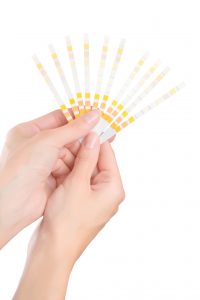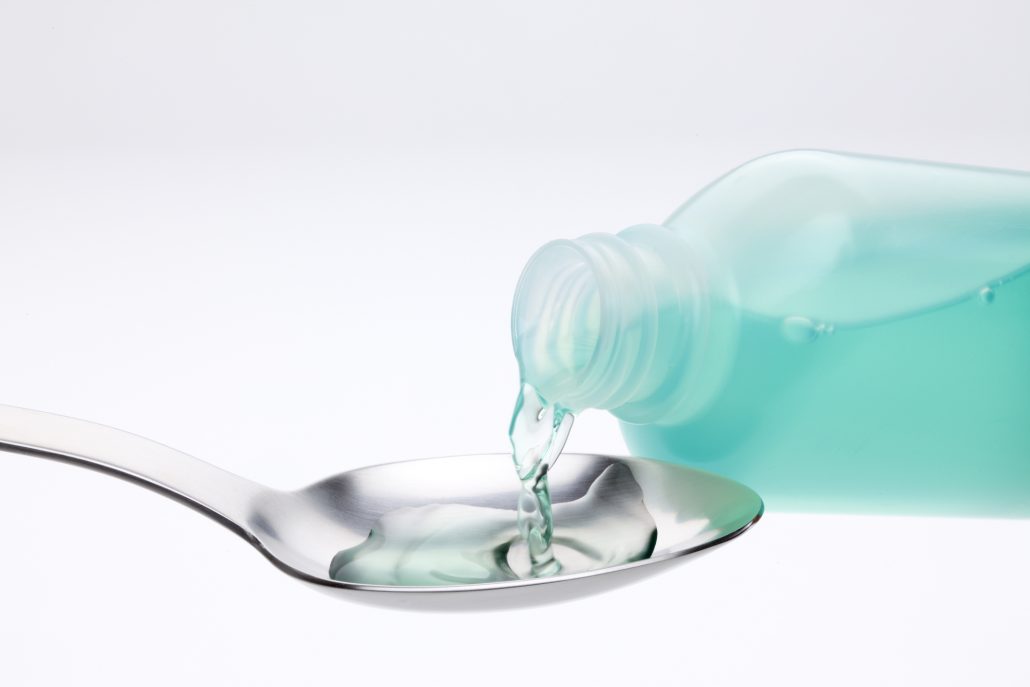by Sher Delva | May 31, 2017 | Addiction, Addiction Medicine, Addiction Stigma, Drug Abuse, Mental Health, Stigma

Termination of employment document
One question many ask before going to treatment is whether or not they can keep their jobs after treatment. The decision to go to treatment is a challenging one and often, conflicts like separation from family, current employers, and financial hardships prevent some from making the crucial decision to go to treatment.
If you are struggling with substance abuse, all these areas are already being negatively affected by your addiction. Your employer may already suspect that you have an issue with substance abuse. If they do not, it is a smart idea to address the issue before it progresses to interfering with your employment.
We understand that you have concerns about seeking treatment, but you risk everything—including your job— if you do not seek treatment for your alcohol or drug problem. Your addiction has become unmanageable, and it is crucial you address it to sustain a healthy life.
Can I lose my job if my boss knows that I need treatment?
The Americans with Disabilities Act (ADA) protects employees from being discriminated against because of a disability. People who struggle with the disease of alcoholism are considered to have a disability under ADA guidelines. However, the guidelines do get tricky. If your job performance declines because of your drinking, your employer has the right to terminate you because of poor work performance.
Actively using illegal drugs is not protected by the ADA. However, the act does protect someone who has gone through drug rehab and is not using or has a history of drug use but is in recovery. You employer has the right to test you for drugs, but they cannot ask about your history of addiction. Therefore, it is best to seek recovery and live a sober life to avoid failing a drug test and losing your job.
But will my job be held while I am getting treatment?
The ADA does provide guidelines to protect recovering addicts who seek treatment for drugs and alcohol. Your employer is required to make reasonable accommodations, such as allowing flexibility to attend AA/NA meetings or allowing a leave of absence to attend alcohol and drug rehab. The Family and Medical Leave Act or FMLA can protect you while you seek treatment.
Still, some employers make it difficult to return to work after treatment. It is important you know your rights and the policies of your employer to hold them accountable. Furthermore, remember that seeking treatment should be your priority, and your life depends on living a sober, healthy life. Without treatment, your life may become unmanageable and eventually lead to termination regardless.
Won’t my career or skill set suffer if I leave for treatment?
Think about how much your addiction affects your ability to work. The reality is your career and abilities will likely improve through seeking treatment for your addiction. When you go to treatment, you begin at detox where your body is cleansed from alcohol and drugs and your health and cognitive function improve, making you sharper.
Addressing your addiction issues will make you a better employee. You will find that your productivity improves as well as your desire to work harder. You will now have newfound ambitions that do not involve figuring out how to obtain your D.O.C (drug of choice). Instead, you can use those strategies to improve in your profession.
How will I pay for bills and living expenses if I go to rehab?
Going to treatment can be a major expense on top of your bills and cost of living. However, there are a variety of ways to get around this. First, make sure to determine what your insurance covers regarding addiction treatment. Some insurance companies will cover a set amount of time in treatment with little out-of-pocket costs.
Furthermore, using accrued vacation time will help provide a paycheck while in treatment. If your employer offers short-term or long-term disability leave, you might be able to use it while in treatment. More importantly, rehab is a valuable investment that will change your life. If you do NOT go to treatment, you could lose your job due to termination, which would result in more financial strain.
Get the Help You Need
If you are afraid of losing your job or not having a job to come back to, rest assured there are a variety of ways to go about making sure this is not an issue. First, you have to make the decision to go to treatment and explore your options.
You are more likely to keep your job or get a better one after seeking help. You owe it to yourself, your employer and your family to recover from substance abuse, Call now. We want to help.
CALL NOW 1-888-922-5398
by staff | May 23, 2017 | Addiction, Detox, Drug Abuse, Meth

The overdose death outbreak across America is most notably in connection to the opioid epidemic. Law enforcement and health officials all over the country continue to combat the impact of heroin addiction and prescription opioid abuse, and this issue is a consistent talking point. But opioids aren’t the only drugs that authorities are noticing for an increase with rates of use and overdose. Several state agencies in the U.S. have recently reported a spike in overdose deaths related to methamphetamine.
What is Meth/Crystal Meth?
Meth as an illicit recreational drug that goes by several street names, such as:
This substance usually comes in the form of a crystalline white powder, although other colors have been observed including brown, yellow-gray, even pink or blue. It is often described as odorless and bitter-tasting.
Crystal Meth is a version of methamphetamine that can be made with simple ingredients from drug stores. It comes in clear crystals or chunks resembling ice and is most commonly smoked. This form of the drug has other street names such as:
- Blade
- Crystal
- Glass
- Ice
- Shards
Both forms of methamphetamine, and even amphetamine prescription stimulant drugs, are incredibly addictive and extremely dangerous substances.
New Crystal Meth Stats
The Centers for Disease Control and Prevention (CDC) released new statistics from 2015 (the most recent year for which federal data is available) that show:
- In 2014 there were 3,700 deaths from methamphetamine overdoses
- More than 4,500 individuals died in 2015 from methamphetamine
- That is an increase of 30%
According to the Substance Abuse and Mental Health Services Administration (SAMHSA), methamphetamine use jumped from 3% in 2010 to 4% in 2015. That may not seem like much, but consider that in comparison to heroin use, which only rose from 1% to 2% during this same time period.
Meth has become rampant in significant portions of the Midwest and in the South. For example, in Oklahoma:
- Methamphetamine was involved in more than 300 overdose deaths in 2016
- It surpassed death rates for both Oxycodone and Hydrocodone… COMBINED!
This huge upsurge in meth use has also prompted more people to seek treatment for meth addiction. For example, in the year 2015 more than 11,000 patients were admitted for treatment in Minnesota, which is nearly twice as many who sought help for meth addiction 10 years before. Other areas that had no previous history with serious meth use rates have also seen a spike in people seeking treatment for meth addiction.
At the end of the day, whether it is legal amphetamine or illicit methamphetamine, these chemicals are known to be dangerous and addictive. Even prescription drugs containing amphetamines are a risk factor. Depending on how the drug is used, issues related to these powerful stimulants may vary. Amphetamines that are crushed or injected will present different complications.
Treating Methamphetamine Addiction
Confronting the risks and adverse effects of meth addiction effectively and safely means utilizing a medical detox and comprehensive treatment program. The physical and psychological impact leads to a number of side-effects and withdrawal symptoms. Withdrawal symptoms usually include:
- Anxiety
- Agitation
- Incoherent speech
- Dysphoria
- Fatigue
- Lack of motivation
- Sleeplessness
- Vivid dreams
- Suicidal thoughts
The psychological and emotional effects are said to be the most difficult to overcome, while the cravings for the drug are exceptionally strong.
Healthcare officials say they are prepared to help patients during this recent expansion of meth use. However, the director of the Center for Substance Abuse Treatment at SAMHSA, Kimberly Johnson, believes the current need for treatment may far exceed available resources.
The main strategy for treating meth addiction remains medical detox, followed by inpatient treatment and outpatient therapy. The abuse of amphetamines and methamphetamine, such as crystal meth, is quite serious and therefore amphetamine and methamphetamine abuse treatment is crucial to helping those who struggle with meth addiction.
Overall, the rates of meth use are rising, and there are treatment programs in place to holistically face these issues. For many, meth addiction is an all-consuming threat that takes over their life. If you or someone you love is struggling with substance abuse or addiction, please call toll-free now.
CALL NOW 1-888-922-5398
by Sher Delva | May 22, 2017 | Addiction, Addiction Medicine, Addiction Stigma, Mental Health, Stigma, Therapy, Uncategorized, Withdrawal

A recent article in Psychology Today explores the topic of chronic stress and how stress can increase vulnerability to addiction.
Have you dealt with a lot of stress lately? If so, it might be time to take care of it. Stress is a major risk factor in addiction recovery. Stress may increase the chance of a relapse. Stress is a normal part of everyday life and while it may not be possible to eliminate stress completely, there are ways to manage it better.
What is Stress?
Most of us have been stressed before, but how exactly do you define stress? Stress is defined as adversity or hardship that a person experiences. Biologically speaking, stress causes a rise in our blood levels and increases stress hormones, like cortisol. Fight-or-flight is the normal response to stress. In this state, all the blood goes to the muscles so that you are ready to take off when necessary.
There is a difference between chronic and normal stress. Moderate stressors in life are perceived to be pleasant. In fact, some people love a challenging stressful situation that promotes the release of stress hormones. However, intense and prolonged stress due to unfortunate situations can produce feelings of helplessness and depression.
Chronic stress increases the risk for developing:
- Depression
- The Common Cold
- Influenza
- Tension Headaches
- Clenching of the Jaw
- Teeth Grinding
- Tension of neck and shoulders
Stress stems from a multitude of sources. Trauma in early childhood can make people more vulnerable to stress later in life. There are studies that suggest stress in early life can cause methylation of key genes that control the stress system When this happens, we remain in a constant state of emergency.
The workplace is another environment prone to chronic stress.
If your job is very demanding, stress is a likely result. On the same note, those who feel unappreciated at work or unimportant are susceptible to developing clinical anxiety and depression, as well as stress-related medical conditions like ulcers and diabetes.
For some, a common remedy is abusing addictive substances. Research in human studies reveals that adversity during childhood and early life can increase the risk for addiction. Furthermore, people with an unhappy marriage, dissatisfaction with employment or harassment also report increased rates of addiction.
The more stressors a person is exposed to, the greater risk of substance abuse. Economist Deaton (2015) shows that less educated white Americans who struggle in the job market during early adulthood are more likely to experience “cumulative disadvantage” over time, with health and personal problems that lead to drug overdoses, alcohol-related liver disease, and suicide.
Why is this?
One explanation is the self-medication theory. This theory suggests that a person uses drugs to cope with stressors or relieve themselves of anxiety and depression resulting from a traumatic event. Thus, drug use acts as a mean to soothe the psychological distress.
High emotional stress is linked to loss of impulse control and an inability to delay gratification. Chronic stress decreases gray matter volume in the brain. This area is associated with cognitive control and stress regulation.
Essentially, stressed people are prone to give into their impulses as a way of coping with daily stress. In sum, people who are more stressed lack the ability to make rational decisions.
In conclusion, learning to manage stress is crucial to success in recovery. if you are struggling, reach out for help. There are a variety of treatment options available to manage stress. We are a phone call away. Please take care of your health. Call now.
CALL NOW 1-888-922-5398
by Sher Delva | May 22, 2017 | Addiction, Addiction Medicine, Addiction Stigma, Mental Health, Stigma, Therapy, Uncategorized

A needle exchange program in the Bronx, New York is stepping up to combat the ongoing opioid crisis and rising overdose death rates. Their latest tactic is handing out fentanyl test strips to heroin users.
The reasoning behind the test strips is to lower overdoses due to fentanyl-laced heroin.
Staff member Van Asher explains that the test strips will help addicts determine whether or not there is fentanyl is the drugs they’re using. The strips are usually used to drug test urine, but people can put a little of the mixture that’s in their syringe onto the strip to test whether or not what they are injecting contains fentanyl. This will help them make a more informed decision about what they are putting in their bodies, Asher explained to NPR.
Studies conducted by the Centers For Disease Control and Prevention revealed that most people do not know whether the heroin they’re using contains fentanyl. Asher told NPR that he started handing the strips out of desperation to curb the overdose rates among his clientele.
With each strip, Asher gives a survey to fill and report back. Unfortunately, Ashley admits getting clients to follow through is a difficult task.
Still, Asher is now working with programs around the country to try to replicate his idea. The idea originated at Inside in Vancouver Canada, North America’s only safe injection facility.
However, the major difference is that if someone is choosing to use their fentanyl-laced heroin at Inside, they can be medically monitored and an overdose is more likely to be reversed by staff, preventing death.
In the United States, safe injection facilities do not exist yet. While there are few areas testing the concept, none have yet to become established. Furthermore, harm reduction strategies remain a controversial topic. Therefore, it is up to the drug user to monitor how they use the drugs.
Some simply are not convinced.
Drug users like Vincente Estema explain that knowing there is fentanyl in his heroin is not going to stop him from using.
“It’s stronger! If it makes me feel the euphoria, I’m going to go for it,” he told NPR.
When an addict is at the point of wanting to use drugs, it is unlikely that the fentanyl test strips would deter them from using. However, it would at least inform them of the risk they are taking, and could potentially reduce the amount of the drug they take.
In 2015, the spike in fentanyl-laced overdose deaths led the Drug Enforcement Administration to issue a nationwide warning about the drug.
“Drug incidents and overdoses related to fentanyl are occurring at an alarming rate,” said DEA Administrator at the time, Michele Leonhart, calling it a “significant threat to public health and safety.”
During a three-month period in 2016, 74% of opioid overdoses in Massachusetts were caused by fentanyl! Fentanyl is up to 100 times stronger than morphine and is the strongest opioid available to doctors; even worse, different variations of fentanyl are hitting the streets like carfentanil and acryl fentanyl.
The numbers from Massachusetts indicate that heroin overdoses are dropping, but opioid-related overdose deaths continue to increase. Authorities agree that fentanyl is to blame. In a press release, Massachusetts Secretary of Health and Human Services Marylou Sudders called the data, “a sobering reminder of why the opioid crisis is so complex.”
Do you believe these strips could help combat the opioid epidemic? Would it affect how an addict uses? Regardless, any addict continues to use needs to seek help instead. The next time you use could be your last. Recovery is possible. We want to help you. Call now.
CALL NOW 1-888-922-5398
by Justin Mckibben | May 18, 2017 | Addiction Medicine, Detox, Heroin, Maintenance Drugs, Methadone, Opioids, Prescription Drugs, Withdrawal

Ever since Methadone was introduced to combat opioid dependence, it has been leaned on by countless people over several decades to treat opioid abuse. For a long time methadone clinics have been looked to as a source of relief from an addiction to opioids, but are they as effective as people seem to think? Over time more people who have used methadone to try overcoming serious addictions have realized methadone maintenance also comes with a great deal of damaging side effects.
What is a methadone clinic?
A methadone clinic is a clinic for the dispensing of methadone. Because this is a schedule II opioid analgesic drug, access must be restricted. Methadone clinics are a way to provide people with this medication. But before you rush out to find the one closest to you, there are a lot of things to consider.
What is a Methadone Clinic: History of Methadone
Firstly, let us not that methadone is an opioid drug. It is used to treat pain, like most opioid medications, but most people know it as a maintenance drug for detoxing from dependence on other opioids, such as heroin. Methadone, sold under many brand names, including:
- Methadose
- Dolophine
- Symoron
- Amidone
- Physeptone
- Diskets
Different countries have different brands as well. A few footnotes of the history of methadone include:
Methadone was developed in Germany by Gustav Ehrhart and Max Bockmühl.
The United States approved the use of Methadone.
About 41.400 kilograms of methadone were manufactured globally
What is a Methadone Clinic: Methadone Detox
Methadone is available in various forms, including:
- Pill
- Sublingual tablet
- Two different formulations designed for the patient to drink
Drinkable forms include:
- Methadose- the ready-to-dispense liquid form found in theUnited States.
- Diskets- tablets designed to work like Alka-Seltzer, dispersing rapidly in water for oral administration.
The most common method of administration is the liquid form, because it allows for small dose changes. Methadone is almost as effective when administered orally as by injection.
Detoxification using methadone is intended to be a way for people addicted to opioids such as heroin or powerful prescription drugs to taper off, but at the same time detoxification using methadone has been met with a great deal of controversy.
Many who oppose methadone clinics refer to this strategy as methadone substitution. As a treatment of opioid addiction methadone is heavily criticized for its role in what some call “social control of addicts.” Many who oppose methadone suggested that the drug does not function as much to curb addiction as to redirect it and maintain dependency. In other words, some insist methadone is essentially keeping people addicted, but making sure the money goes to drug manufactures and methadone clinics instead of street dealers.
What is a Methadone Clinic: Methadone Side-Effects
There are so many adverse effects of methadone, which may vary in range and severity depending on the individual. There include, but are not limited to:
- Sedation
- Diarrhea or constipation
- Perspiration
- Heat intolerance
- Dizziness
- Fainting
- Itching
- Weakness
- Chronic fatigue
- Sleep problems
- Nausea
- Hallucinations
- Memory Loss
- Weight gain
- Stomach pains
- Mood changes
- Restlessness
- Decreased libido or impotence
- Urinary difficulty
- Blurred vision
- Skin rash
- Low blood pressure
- Headaches
- Seizures
- Heart problems
- Respiratory problems
Some of these adverse effects of methadone use are much more serious than others.
What is a Methadone Clinic: Withdrawal Symptoms
There is also a massive list of possible withdrawal symptoms from using methadone. This is one of the primary issues many people have with methadone treatment.
Physical withdrawals include:
- Runny nose and sneezing
- Nausea
- Vomiting
- Diarrhea
- Fever
- Sweating
- Chills
- Aches and pains (especially in joints)
- Sensitivity to pain
- Hyperventilation
- Tremors
- High blood pressure that may cause strokes
Others are more concerned with the mental aspect of the withdrawals experienced from methadone.
Cognitive withdrawals include:
- Suicidal ideation
- Drug cravings
- Depression
- Insomnia
- Delirium
- Hallucinations (auditory and visual)
- Agitation
- Anxiety
- Panic disorder
- Paranoia
- Delusions
- Apathy
The irony is that methadone withdrawal symptoms are even reported to last significantly longer than withdrawals from some other opioids. In some cases, people may even try to treat an opioid addiction with this drug not knowing that it is actually a much worse opioid to withdrawal from.
What is a Methadone Clinic: Methadone Overdose
As mentioned before, there are some very real dangers when it comes to using methadone.
- Between 1999 and 2004, deaths in the U.S. linked to methadone quadrupled.
- In 2004 reports credit methadone as contributing to 3,849 deaths, 82% of which were reported as accidental.
- In 2011, there were 4,418 deaths in the United States involving methadone. At the time that made up 26% of total deaths fromopioid poisoning.
Respiratory depression is probably the most common overdose risk related to opioid drugs. Other symptoms of a methadone overdose include:
- Hypoventilation (slow/shallow breathing)
- Drowsiness
- Cool, clammy skin
- Limp muscles
- Unconsciousness
- Coma
- Excessive vomiting
- Risks are greater with higher doses, as well as mixing methadone with any other drugs.
The risks of methadone are very, very real. In fact, U.S. Food and Drug Administration (FDA) issued a Public Health Advisory back in 2006 about methadone titled “Methadone Use for Pain Control May Result in Death and Life-Threatening Changes in Breathing and Heart Beat”. In the report, the FDA stated that they received reports of death and life-threatening side effects with patients who were newly starting methadone.
Both individuals who were starting methadone for pain, or who were trying to switch to it from another powerful narcotic pain reliever were included to be at an elevated risk, according to the FDA.
What is a Methadone Clinic: Another Way
Getting off of powerful opioid drugs, whether they are prescription narcotics or illicit street drugs, is possible without the use of methadone. While maintenance drugs can be useful to some extent as a means of harm reduction, these should not be considered as sustainable means of addiction recovery. Maintenance drugs are typically only ever effective if utilized in combination with therapy and other forms of addiction treatment.
Luckily there are other ways to get help. It is possible to be safely and effectively removed from a methadone taper through a safe medical detox. Understanding methadone can also be fatal is of vital significance. Methadone detox can be deadly if not supported by a medical staff with the right medications to help ease the pain and discomfort of the detox. Medical detox combined with a holistic treatment program is a proven strategy for saving lives.
If you or someone you love is struggling, do not wait. Please call toll-free now. We want to help. You are not alone.
CALL NOW 1-888-922-5398






